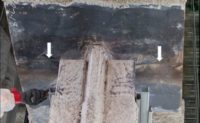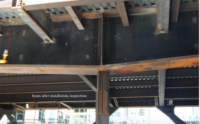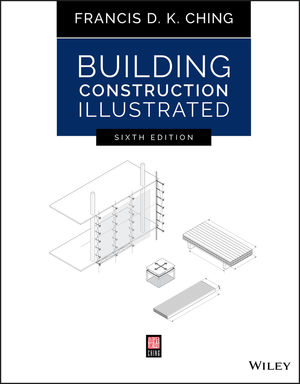Contractor Gets Green Light to Fix Two Fractured Girders at Salesforce Transit Center

Bottom flange fracture near the hanger plate at the midspan of a girder that spans Fremont Street.
Courtesy TJPA
The Transbay Joint Powers Authority announced Jan. 10 that procurement has begun for the repair of the two fractured bottom flanges of the twin parallel girders that span 80 ft across Fremont Street in the 4.5-block-long Salesforce Transit Center in San Francisco. TJPA shuttered the transit center on Sept. 25, less than six weeks after it had opened, after a ceiling installer noticed a crack in one of the bridgelike spans.
Last month, the Metropolitan Transportation Commission's peer review panel, overseeing the TJPA's investigation into the causes of the fracture, approved the repair scheme, designed by the project's engineer-of-record, Thornton Tomasetti. Materials for the repair, which also includes the same fix for identical First Street girders that did not fracture, may be available in two weeks, said Mark Zabaneh, TJPA's executive director, at the Jan. 10 TJPA board of directors' meeting.
There is no date set yet to reopen the facility, Zabaneh added. But the TJPA is "close to determining" the schedule to reopen, he said. He added that there has been significant progress toward determining a cause of the failure but did not offer any details.
Tapered Plate Girders
Before the problems surfaced, the 1.2-million-sq-ft transit center was functioning as a bus depot, with three levels above grade and a 5.4-acre rooftop park. The third-floor Fremont Street tapered plate girders help support the park directly above and the second-floor bus level—via a hanger at the midspan that thickens the web to 4 in. and slots through the bottom flange—directly below the girder level.
The hub, designed by Pelli Clarke Pelli Architects, was built by the Webcor/Obayashi Joint Venture. Skanska USA Civil West holds the $189.1-million subcontract to furnish the building’s 23,000 tons of structural steel and erect the entire system, including the building’s exotic exoskeleton. Herrick Corp. is the steel fabricator.
At the TJPA meeting, Dennis Turchon, TJPA's senior construction manager, announced that the peer review panel has engaged an engineer, Ruby & Associates, to establish the criteria to determine which members of the transit hub may be vulnerable to brittle fracture and to review some 15,000 documents related to design and construction. The criteria will be based on thickness of the steel plate, certain weld types and other elements, he said.
Forensic metallurgist LPI investigating the fractured specimens is scheduled to present its finite-element analysis (FEA) to the review panel on Jan. 18. Prior to that, on Jan. 11, the members of the TJPA team involved in the design and construction of the girders will meet to assemble additional information for the peer reviewers.
The review panel's scrutiny of the mid-span hanger detail and its health, based on core samples of the material, will be incorporated into the FEA by next month. The FEA model is a 4D model that includes the dimension of construction sequence over time.
Double Splint
As described by Bruce Gibbons, the TT managing principal in charge of the transit hub, the bolted fix would only repair the compromised region, at the 8-ft-deep midspan of each 80-ft-long girder, by bypassing the fractured area. The double splint consists of a sandwich of two Grade 70 steel plates, 2 in. thick, and a total of 20 in. wide, on both sides of the web. The bent plates will be a total of 14 ft long, centered at the girder's midspan. There will be 224 bolts, said Turchon. In addition, 8-in.-tall plates will be bolted to each girder’s vertical stiffener.
Work has begun to repair the area to either side of the fractures. Crews had removed building systems and finishes for a 30 ft distance along the girders when the area that needs repair is only 14 ft long, said Turchon.
At the meeting, Loring Wyllie, a senior principal of Degenkolb Associates and the head of the original structural and seismic peer review panel for the transit center, said the panel reviewed the girder, with the hanger detail that slots through the flange, and found it to be "very efficient," code compliant and "very logical."
Overall, the transit center design met or exceeded applicable codes and standards, when the panel signed off on the design in 2014. "The design is conservative," said Wyllie.
As far as the holes suspected of initiating the fractures, Wyllie said they were added in the shop-drawing phase and reviewed by the structural engineer. "The peer review panel was not involved in the weld access holes" or cuts, he said.






